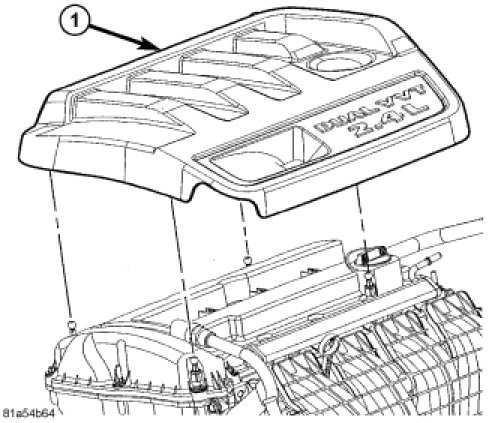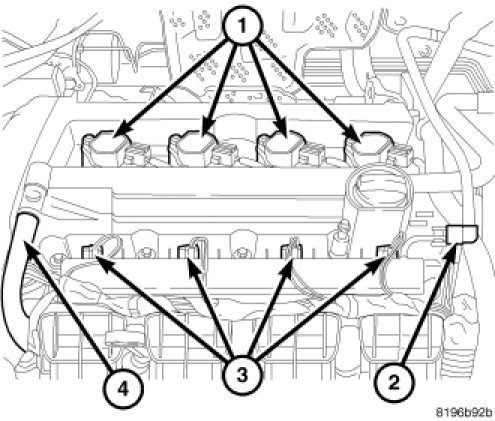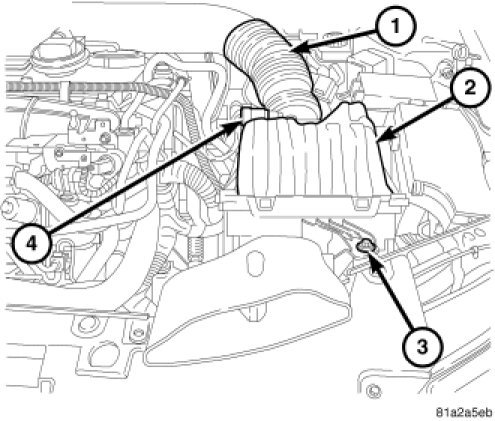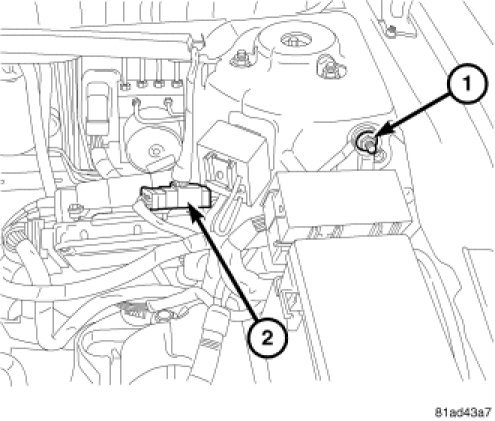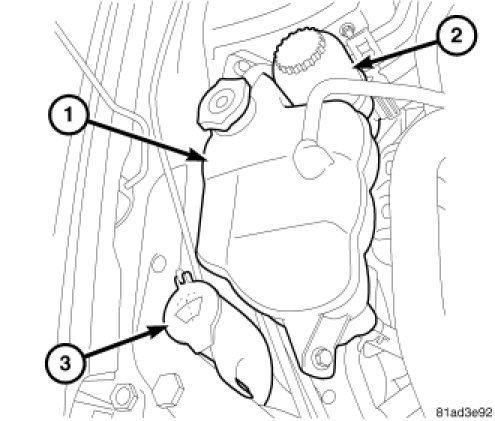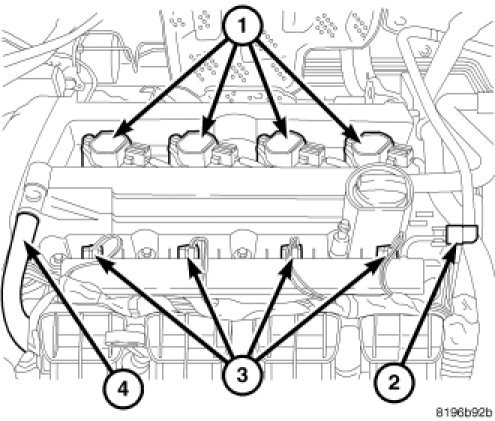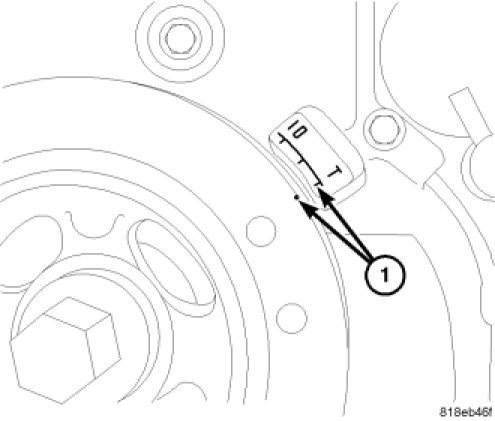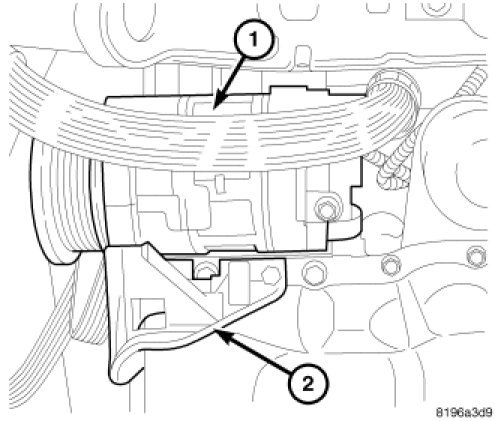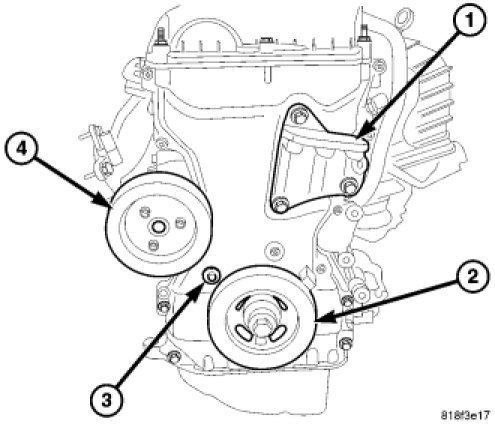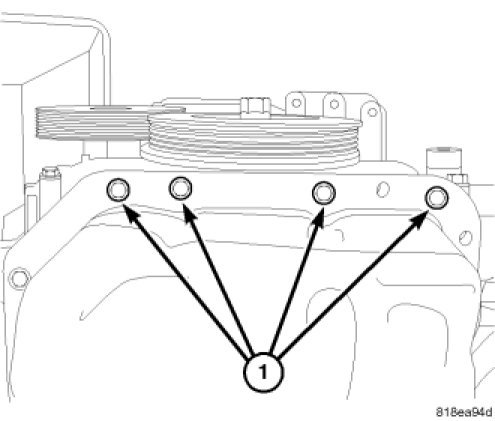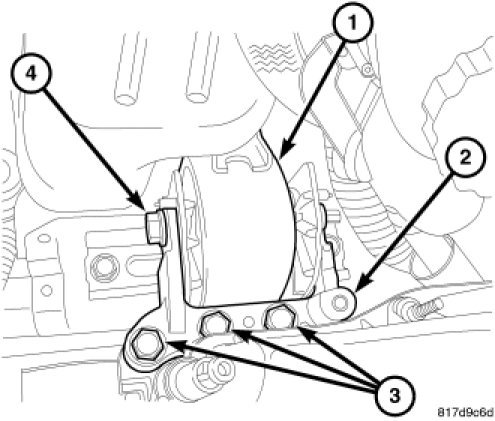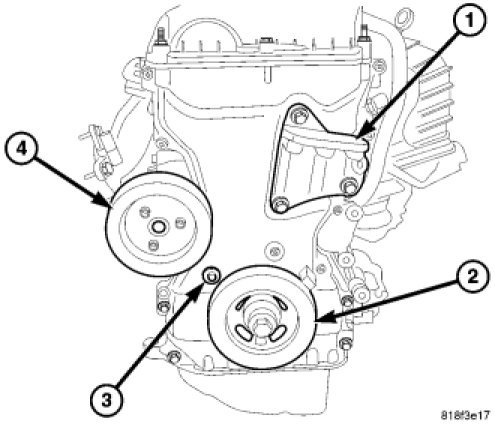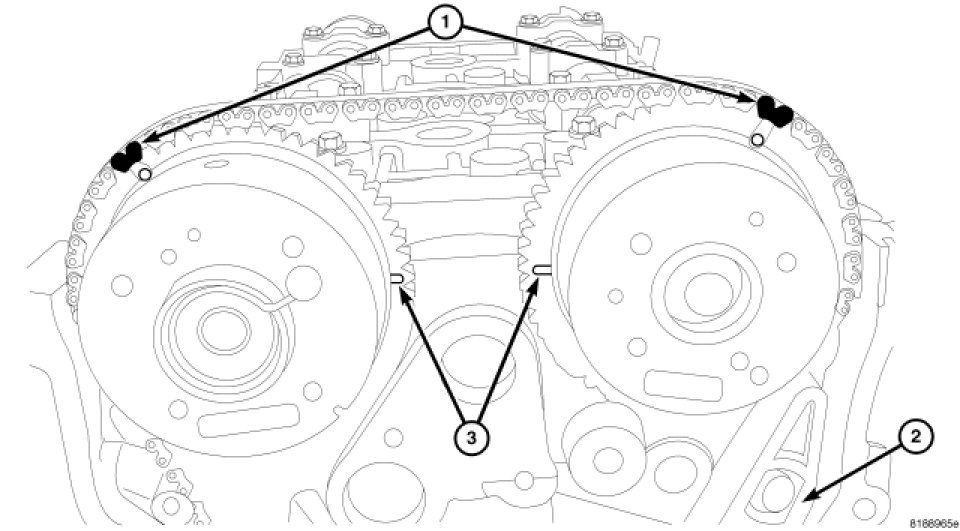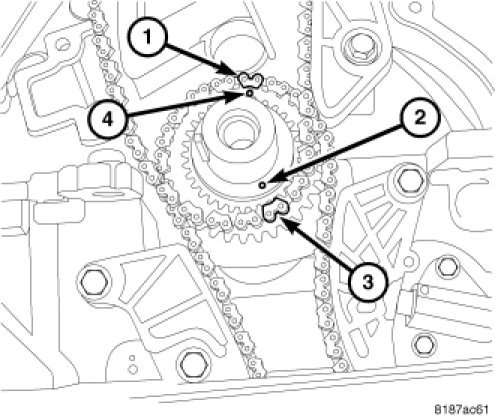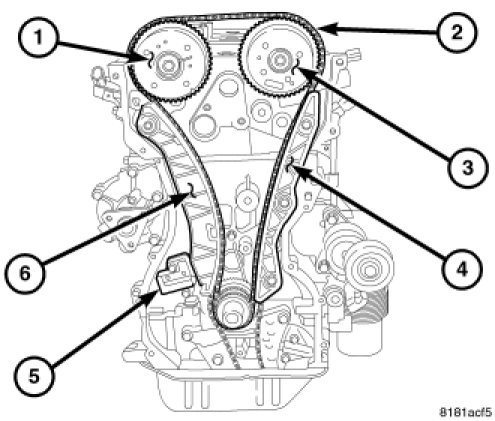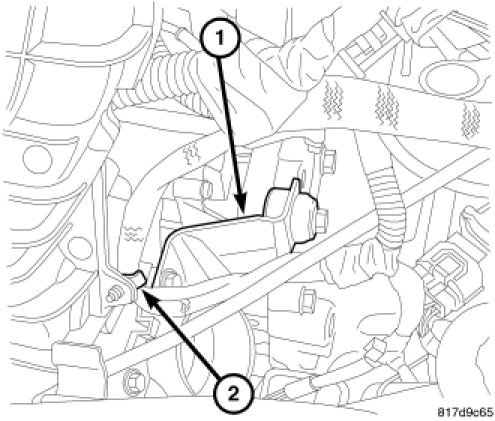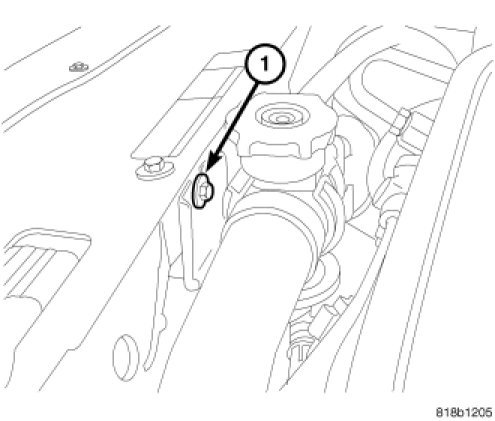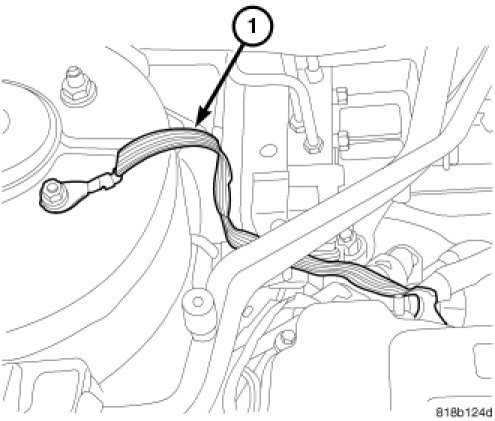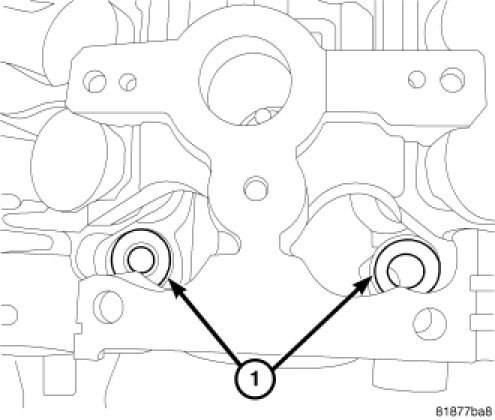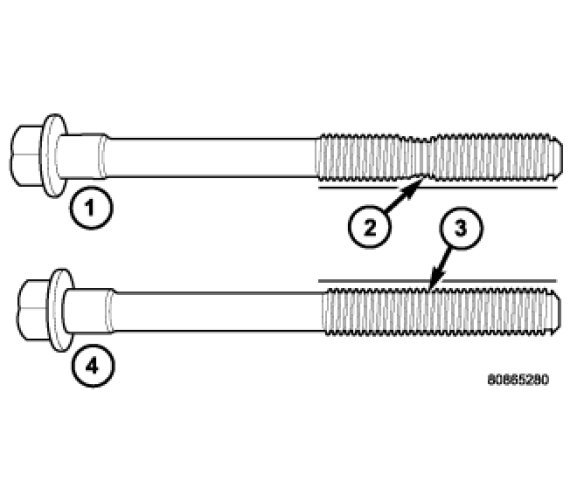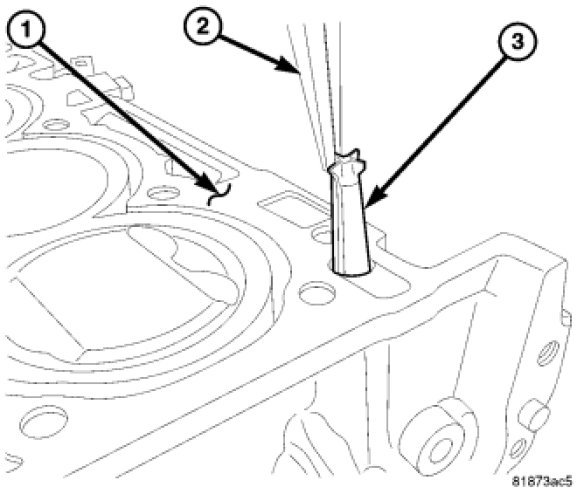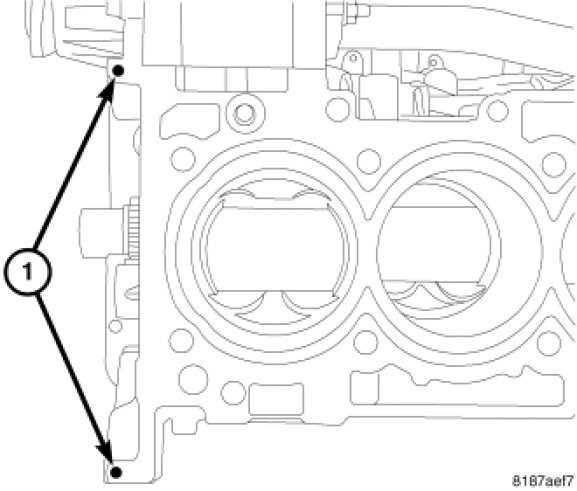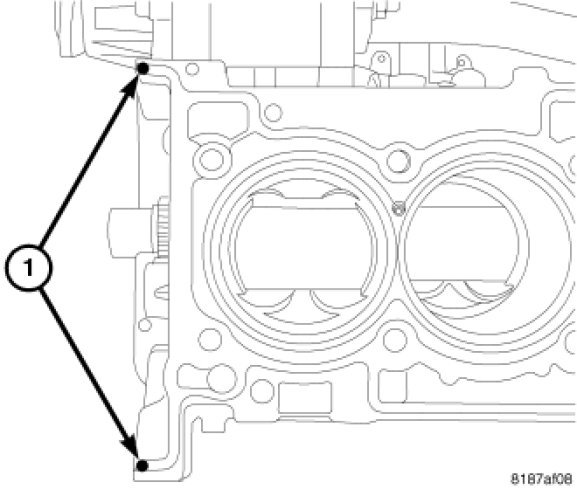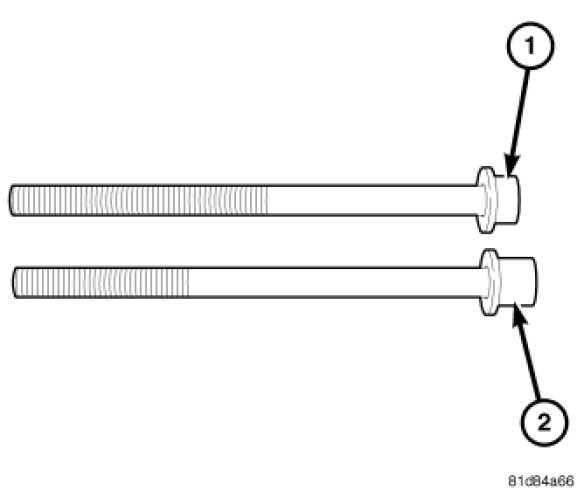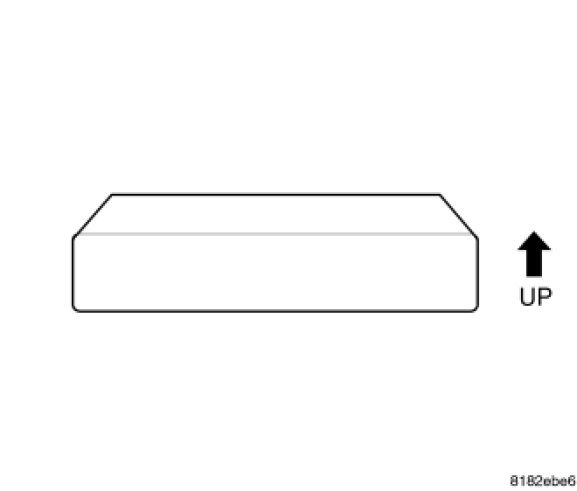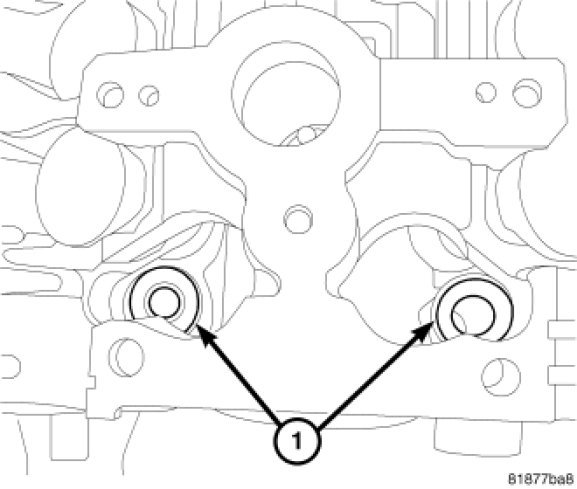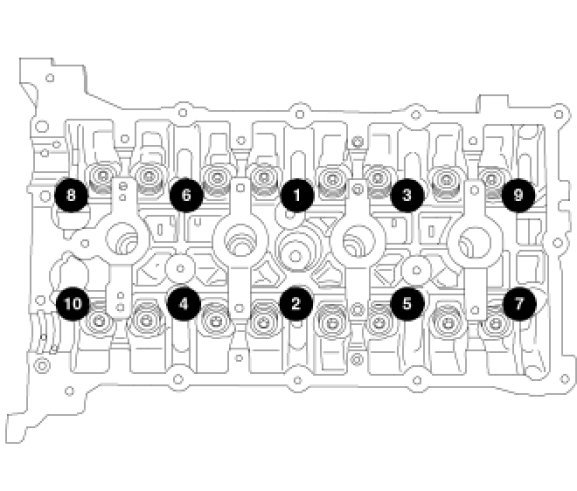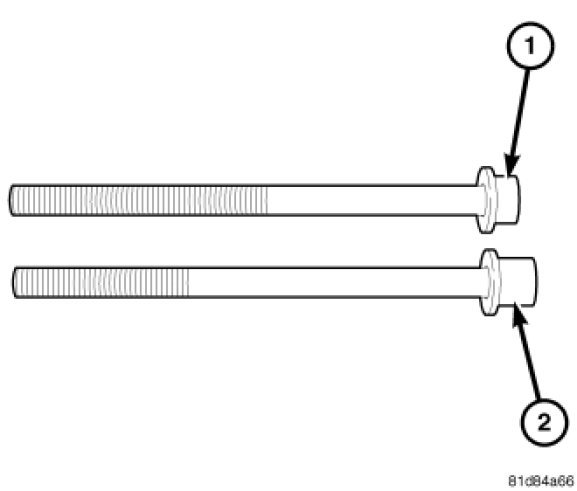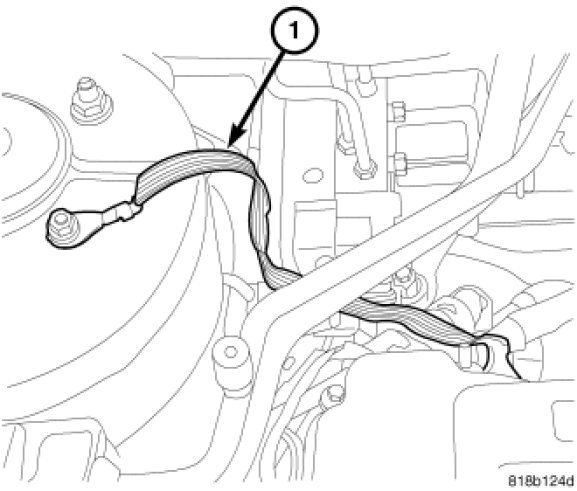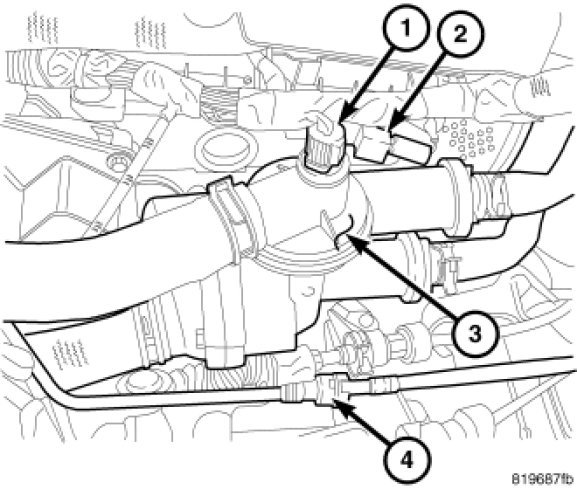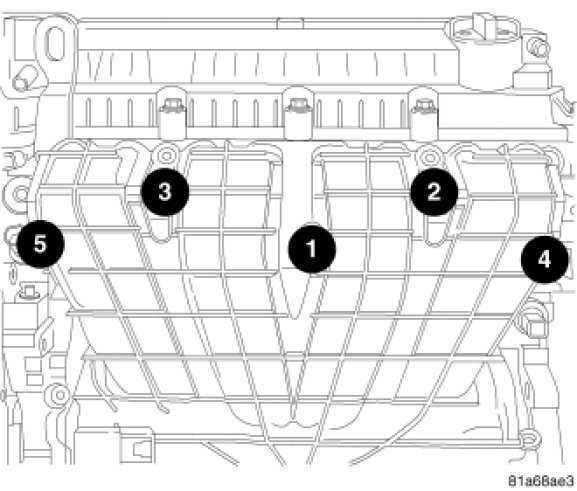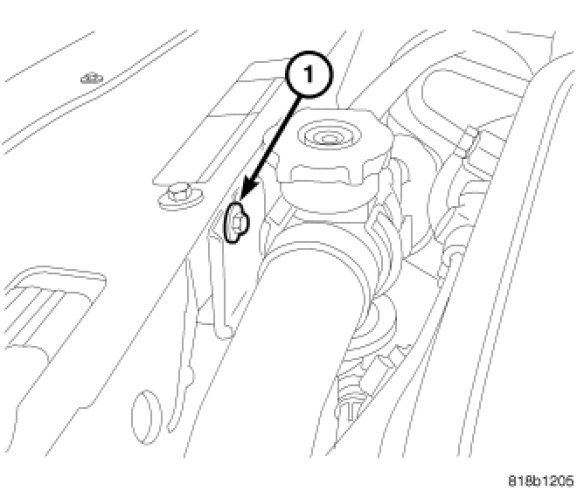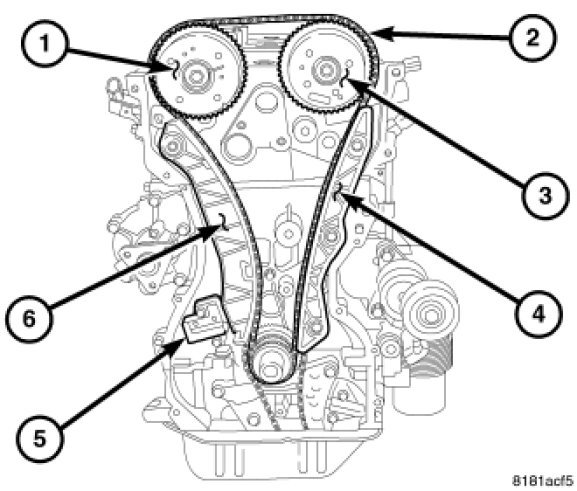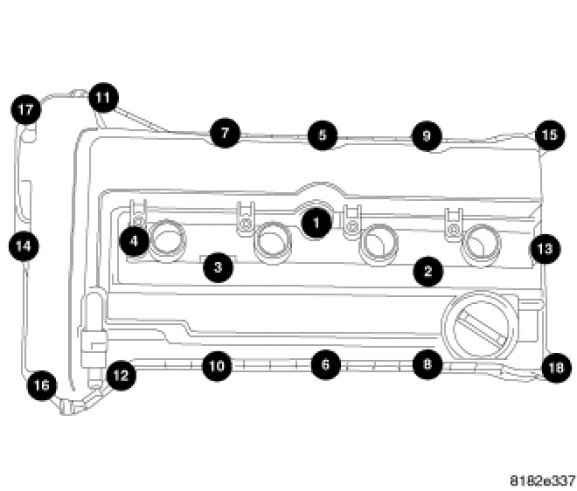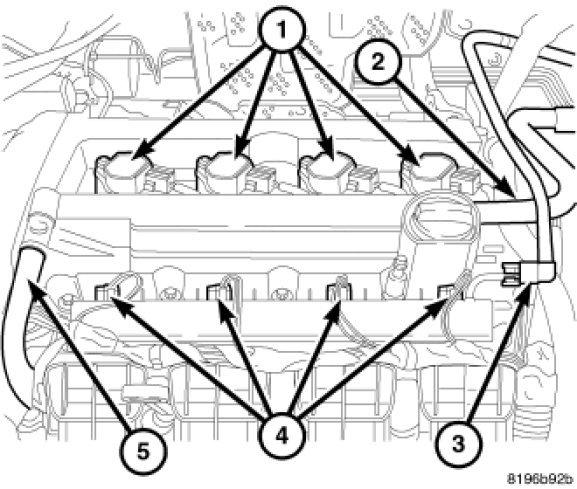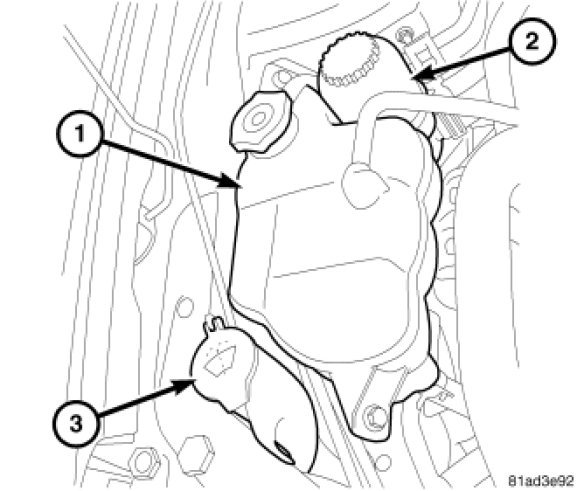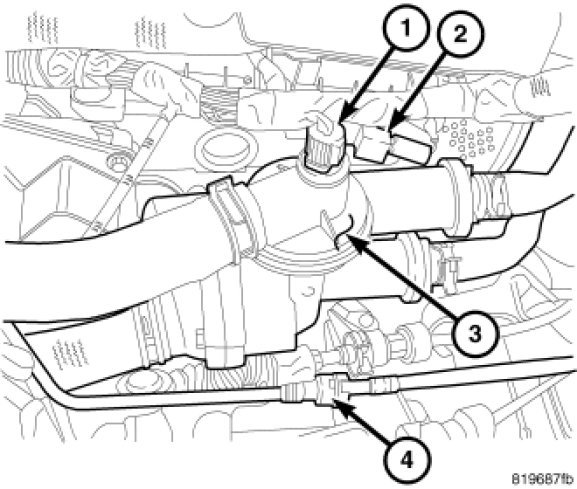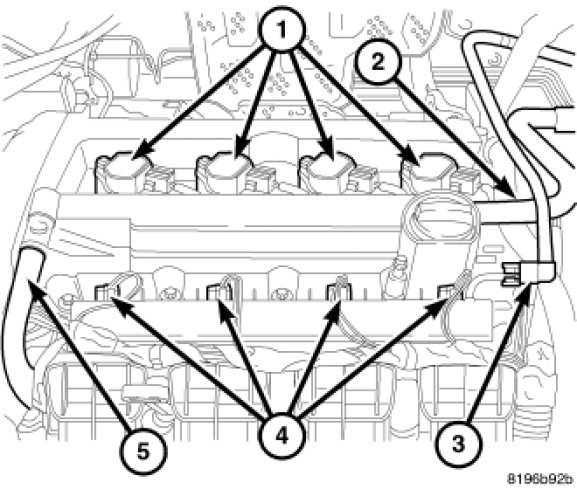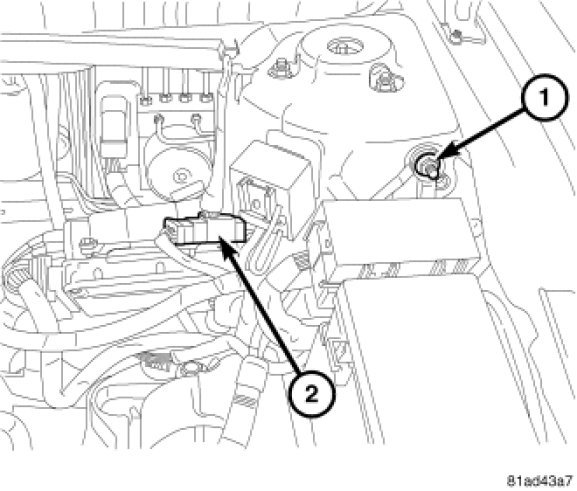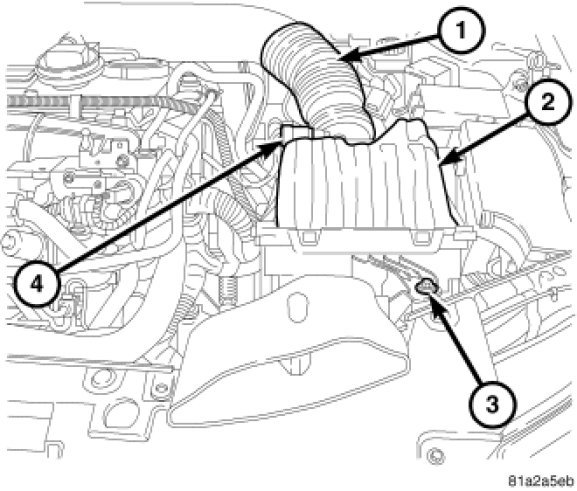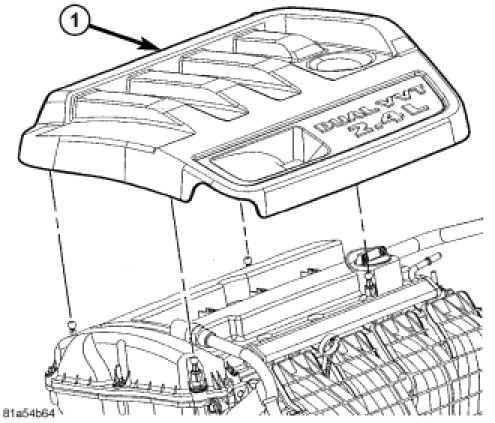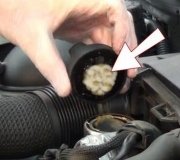Hi,
It does sound like the gasket is bad. If you are seeing it in the engine oil as well as the radiator, then this is my first guess. If you want, take a look through this link. It explains how to check for a bad head gasket.
https://www.2carpros.com/articles/head-gasket-blown-test
If you determine it is bad, here are the directions for removal and replacement of the cylinder head/gasket. It is extensive. The attached pics correlate with the directions.
______________________________________
2008 Dodge Avenger L4-2.4L
Cylinder Head - Removal
Vehicle Engine, Cooling and Exhaust Engine Cylinder Head Assembly Service and Repair Removal and Replacement Cylinder Head - Removal
CYLINDER HEAD - REMOVAL
REMOVAL - CYLINDER HEAD
pic 1
1. Remove engine cover (1).
pic 2
2. Perform fuel system pressure release procedure before attempting any repairs See: Fuel Pressure Release > Procedures > Fuel System Pressure Release Procedure.
3. Disconnect fuel line (2).
pic 3
4. Remove clean air hose and air cleaner housing (2)See: Air Cleaner Housing > Removal and Replacement > Air Cleaner Housing - Removal.
pic 4
5. Disconnect negative battery cable (1).
6. Drain cooling system See: Cooling System > Procedures > Cooling System - Standard Procedures.
pic 5
7. Remove coolant recovery bottle (1).
8. Remove and reposition power steering reservoir (2).
9. Remove power steering pump and reposition.
pic 6
10. Disconnect breather hose.
11. Disconnect PCV hose (4).
12. Disconnect ignition coil electrical connectors (1).
13. Remove cylinder head cover.
pic 7
14. Raise vehicle.
15. Remove right splash shield.
16. Set engine to TDC (1).
17. Remove accessory drive belts See: Drive Belt > Removal and Replacement > Accessory Drive Belt - Removal.
pic 8
18. Remove lower A/C compressor bolts if equipped.
19. Remove lower A/C compressor mount (2) if equipped.
pic 9
20. Remove accessory drive belt lower idler pulley.
21. Remove crankshaft damper (2).
22. Remove water pump pulley (4).
23. Remove right side engine mount bracket (1) lower bolt.
pic 10
24. Remove timing chain cover lower bolts (1).
25. Disconnect oxygen sensor electrical connectors.
26. Remove exhaust pipe at manifold.
27. Lower vehicle.
28. Support engine with suitable jack.
pic 11
29. Remove right engine mount through bolt (4).
30. Remove right engine mount to mount bracket bolts (3).
31. Remove right engine mount adapter (2).
pic 12
32. Remove accessory drive upper idler pulley.
33. Remove right upper engine mount bracket (1).
34. Remove accessory drive belt tensioner.
35. Remove upper timing chain cover retaining bolts.
36. Remove timing chain cover.
pic 13
NOTE: If the timing chain plated links can no longer be seen, the timing chain links corresponding to the timing marks must be marked prior to removal if the chain is to be reused.
37. Mark chain link (1) corresponding to camshaft timing mark.
pic 14
38. Mark chain link (3) corresponding to crankshaft timing mark (2).
pic 15
39. Remove timing chain tensioner (5).
40. Remove timing chain (2).
41. Remove timing chain guides (4,6).
pic 16
42. Disconnect fuel line at the fuel rail (2).
43. Disconnect fuel injector electrical connectors (3).
44. Disconnect top engine electrical connectors and reposition harness.
45. Remove fuel rail.
pic 17
46. Remove throttle body support bracket retaining bolt (2).
47. Disconnect electronic throttle control electrical connector.
48. Disconnect map sensor electrical connector.
49. Disconnect vacuum lines at intake.
50. Remove intake manifold retaining bolts.
pic 18
51. Remove upper radiator hose retaining bolt (1).
52. Remove intake manifold.
53. Remove coolant outlet manifold and set aside.
pic 19
54. Remove ground strap (1) at right rear of cylinder head.
55. Remove camshaftsSee: Camshaft, Engine > Removal and Replacement > Camshaft - Removal.
pic 20
NOTE: All of the cylinder head bolts have captured washers EXCEPT the front two (1).
56. Remove cylinder head bolts.
57. Remove cylinder head from engine block.
58. Inspect and clean cylinder head and block sealing surfaces. Refer to Cleaning and Inspection for procedures.
NOTE: Ensure cylinder head bolt holes in the block are clean, dry (free of residual oil or coolant), and threads are not damaged.
_______________________________________
2008 Dodge Avenger L4-2.4L
Cylinder Head - Installation
Vehicle Engine, Cooling and Exhaust Engine Cylinder Head Assembly Service and Repair Removal and Replacement Cylinder Head - Installation
CYLINDER HEAD - INSTALLATION
INSTALLATION - CYLINDER HEAD
pic 21
NOTE: Ensure cylinder head bolt holes in the block are clean, dry (free of residual oil or coolant), and threads are not damaged.
NOTE: The Cylinder head bolts should be examined BEFORE reuse. If the threads are necked down, the bolts should be replaced.
Necking can be checked by holding a scale or straight edge against the threads. If all the threads do not contact the scale (2), the bolt should be replaced.
pic 22
CAUTION: Always replace the variable valve timing filter screen (3) when servicing the head gasket or engine damage could result.
1. Replace the variable valve timing filter screen (3).
pic 23
NOTE: When using RTV, the sealing surfaces must be clean and free from grease and oil.
NOTE: When using RTV, parts should be assembled in 10 minutes and tighten to final torque within 45 minutes.
2. Place two pea size dots of Mopar(R) engine sealant RTV or equivalent (1) on cylinder block as shown.
pic 24
3. Position the new cylinder head gasket on engine block with the part number facing up. Ensure gasket is seated over the locating dowels in block.
4. Place two pea size dots of Mopar(R) engine sealant RTV or equivalent (1) on cylinder head gasket as shown.
NOTE: The head must be installed within 15 minutes before the RTV skins.
5. Position cylinder head onto engine block.
pic 25
CAUTION: This engine was built with 2 different style cylinder head bolts. Each style bolt requires a different torque value. The bolts can be identified by the short bolt head (1) and the long bolt head (2).
6. Measure the bolt head from the washer to the top of the bolt head. The short bolt head (1) measures 8 mm (5/16") and the long bolt head (2) measures 13 mm (1/2").
7. Identify whether your engine has the short head design (1) or the long head design (2).
pic 26
NOTE: The front two cylinder head bolts do not have captured washers. The washers must be installed with the bevel up towards the bolt head.
pic 27
8. Install washers (1) for the front two cylinder head bolts.
pic 28
9. Before installing the bolts, the threads should be lightly coated with engine oil.
10. Install the cylinder head bolts and tighten in the sequence shown.
pic 29
11. If your bolt has the short head (1), use the following torque specifications:
- First: All to 30 Nm (25 ft. lbs.)
- Second: All to 61 Nm (45 ft. lbs.)
- Third: All to 61 Nm (45 ft. lbs.)
- Fourth: All an additional 90°
CAUTION: Do not use a torque wrench for the Fourth step.
12. If your bolt has the long head (2), use the following torque specifications:
- First: All to 30 Nm (25 ft. lbs.)
- Second: All to 73 Nm (54 ft. lbs.)
- Third: All to 73 Nm (54 ft. lbs.)
- Fourth: All an additional 90°
CAUTION: Do not use a torque wrench for the Fourth step.
13. Clean excess RTV from timing chain cover sealing surface.
14. Install camshafts.See: Camshaft, Engine > Removal and Replacement > Camshaft - Installation.
pic 30
15. Install cylinder head cover See: Valve Cover > Removal and Replacement > Cylinder Head Cover - Installation.
16. Install exhaust manifold See: Exhaust Manifold > Removal and Replacement > Installation.
17. Install ground strap (1) at right rear of cylinder head.
pic 31
18. Install coolant adapter (3) with new seals.
19. Connect coolant hoses.
20. Connect purge hose (4).
pic 32
21. Install intake manifold.
22. Install intake manifold bolts and tighten to 24 Nm (18 ft. lbs.).
pic 33
23. Install upper radiator hose retaining bracket bolt (1).
pic 34
24. Install timing chain (2)See: Timing Chain > Removal and Replacement > Timing Chain & Sprockets - Installation.
25. Install timing chain cover See: Timing Cover > Removal and Replacement > Timing Cover - Installation.
pic 35
26. Remove coils from cylinder head cover.
27. Install cylinder head cover See: Valve Cover > Removal and Replacement > Cylinder Head Cover - Installation.
pic 36
28. Connect cam sensor wiring connector.
29. Install spark plugs and tighten to 27 Nm (20 ft. lbs.).
30. Install ignition coils (1) and tighten to 8 Nm (70 in. lbs.).
pic 37
31. Install power steering pump reservoir (2).
32. Install coolant recovery reservoir (1)
33. Install accessory drive belts See: Drive Belt > Removal and Replacement > Accessory Drive Belt - Installation.
34. Connect engine coolant temperature sensor connector.
pic 37
35. Connect coolant hoses to coolant adapter (3).
36. Connect heater hoses to thermostat housing (3).
37. Connect coolant temperature sensor (1) and capacitor (2) electrical connectors.
38. Install heater tube support bracket to cylinder head.
pic 38
39. Install fastener attaching dipstick tube to lower intake manifold.
40. Connect coil (1) and injector (4) electrical connectors.
41. Install fuel rail.
42. Connect fuel supply line quick-connect (3) at the fuel rail assembly See: Fuel Line Coupler > Procedures > Standard Procedure - Quick-Connect Fittings.
43. Fill cooling system See: Cooling System > Procedures > Cooling System - Standard Procedures.
pic 39
44. Connect negative battery cable (1).
pic 40
45. Install clean air hose (1) and air cleaner housing (2)See: Air Cleaner Housing > Removal and Replacement > Air Cleaner Housing - Installation.
pic 41
46. Install new oil filter and fill engine with oil.
47. Start engine and check for leaks.
48. Install engine cover (1).
____________________________
I hope this helps. Let me know if you have other questions.
Take care and God Bless,
Joe
Images (Click to make bigger)
Friday, February 19th, 2021 AT 6:16 PM
